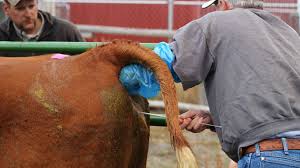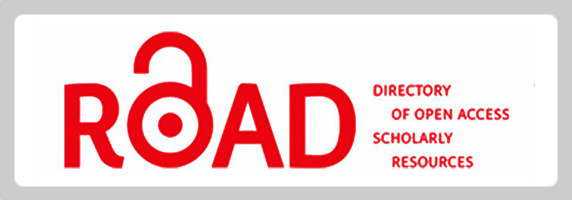The Institutional Structure, Perception, Efficiency and Administration of Artificial Insemination in Central Highlands of Ethiopia
Abstract
This study was conducted to assess institutional structure, perception and administration of Artificial insemination and identify the problems associated with AI in Adea Berga, Ejerie and Metarobi districts. The study was undertaken using questionnaire-based survey and a participatory group discussion method. A total of 180 households were participated in the interview. A Structured questionnaire was used to describe qualitative and quantitative traits. Descriptive statistics, analysis of variance (ANOVA) and Frequency distribution procedures were used for statistical analysis of survey. From the result of the study about 74.8% of AI was handled by government-based AI delivery system. Similarly, 16.5% of AI service was given by private practitioners. About 95.5% of the respondents had an opportunity to access currently existing AI service. However, about 57.47% of the respondents were not satisfied with the existing AI service. Regarding AI service about 90.45% of dairy farmers were get AI service with interruption from current delivery system. Among these 94.94% of the respondents were not get AI service during weekends and Holiday. The survey shows us about 96.83% of the respondents were used Holstein Friesian for cross breeding and also Holstein Friesian breed was the most preferred breed for cross breeding. In case artificial inseminators were too late at the time of estrus sign about 47.13%, 46% and 2.30% of dairy farmers were reject the service and wait for another 21 days, use natural mating and get AI service in any way to their cows respectively. About 61.87% of respondents reported that the failure of insemination was occurred with different frequency. The failure of insemination could be expressed interms of frequency as 38.13%, 24.44%, 20% and 16.67% of respondents at once, twice, three time and more than four times respectively. Difficulty in heat detection was the first major reason for failure of AI in the study area. In addition to the above absence of AI technician was the second while inefficient technician and far distance of AI center for breeding were the third important reasons failure of artificial insemination. In connection with the price about 97.48% the respondents were wanted to increase the price with quality AI service.
Downloads
References
Alazar, W. Bemrew, A. Anmaw, S. and Saddam, M. (2015), “Assessment of Problems Associated with Artificial Insemination Services in Dairy Cattle in Debretabour Town, Ethiopia”, Journal of Reproduction and Infertility 6 (2): 48-55, 2015
Ashebir, G. Birhanu, A. and Gugsa, T. (2016), “Status of Artificial Insemination in Tigray Regional State, “Constraints and Acceptability under Field Condition”. Journal of Dairy, Veterinary & Animal Research, volume, 3(3):00078 •
Aynalem, H. (2006), Genetic and Economic Analysis of Ethiopian Boran Cattle and Their Crosses with Holstein Friesian in Central Ethiopia. PhD Dissertation, Division of Dairy Cattle” Breeding National Dairy Research Institute (i.c.a.r), Karnal-132001 (Haryana), India. 201pp
Azage, T. Birhanu, G. and Derik, H. (2010), “Livestock input supply and service provision in Ethiopia: Challenges and opportunities for market-oriented development. IPMS Working Paper 20. Nairobi (Kenya): ILRI”
Belayneh, E. (2018), “Artificial Insemination Service Efficiency and Constraints of Artificial Insemination Service in Selected Districts of Harari National Regional State, Ethiopia”. Open Journal of Animal Sciences, 8, 239-251. doi: 10.4236/ojas.2018.83018.
Central Stastical Authority (CSA) (2016), “Agricultural Sample Survey, Livestock and Livestock Characteristics Volume II. Blutin Number, 585, Addis Ababa, Ethiopia”.
Central Statistical Authority (CSA) (2007), “Summary and Statistical Report of the 2007 Population and Housing Census. Population Size by Age and Sex. Federal Democratic Republic of Ethiopia Central Statistical Agency Population Cencus Commission. Addis Ababa”, Ethiopiahttp://www.instepp.umn.edu/sites/default/files/product/downloadable/Ethiopia_2007-08_Vol2.pdf
Central Statistical Authority (CSA) (2007), “Summary and Statistical Report of the 2007 Population and Housing Census. Population Size by Age and Sex. Federal Democratic Republic of Ethiopia Central Statistical Agency Population Cencus Commission. Addis Ababa, Ethiopia”
Central Statistical Authority (CSA) (2013), “Federal Democratic Republic of Ethiopia Agricultural Sample Survey. Livestock and Livestock Characteristics Bulletin, Volume II, Central Statistical Authority, Addis Ababa, Ethiopia”
Chupin, D. and Schuh, H. (1992), “Survey of present status of the use of artificial insemination in developing countries”. Animal Production and Health Division, FAO, Rome, Italy
Cochran, W. G. (1963). Sampling technique, 2nd Ed., New York: John Wiley and Sons, Inc
Demeke, N. (2010), “Study on The Efficiency of Conventional Semen Evaluation Procedure Employed at Kaliti National Artificial Insemination Center and Fertility of Frozen Thawed Semen. MSc thesis, Addis Ababa University, FVM, Debre Zeit, Ethiopia”.
Desalegn, G. Merga, B. Azage, T. and Kelay, B. (2009), “Status of Artificial Insemination Service in Ethiopia”. 17th Ethiopian Society of Animal Production proceeding,
GebreMedhin, D. (2005), “All in one: A Practical Guide to Dairy Farming. Agri-Service Ethiopia” Printing Unit, Addis Ababa. Pp. 15-21.
Gerland, P. Raftery, A.E. Ševčíková, H. Li, N. Gu, D. Spoorenberg, T. Alkema, L. Fosdick, B.K. Chunn, J. and Lalic, N. (2014), “World population stabilization unlikely this century”, Science, 346, 234–237
Hamid, J. (2012, “Study on F actors Affecting the Success of Artificial Insemination program in Cattle, Siltie Zone”. Addis Ababa University College of Veterinary Medicine and Agriculture, Veterinary Obstetrics and Gynecology P.P. 21.
Livestock and Irrigation Value chains for Ethiopian Smallholder (LIVES) (2013), “Zonal diagnosis and intervention plan West Shoa, Oromia”
Mekonnen, T. Bekana, M. and Abayneh, T. (2010), “Reproductive performance and efficiency of artificial insemination smallholder dairy cows/heifers in and around ArsiNegelle, Ethiopia”. Livestock Research for Rural Development. Vol. 22, Article #61.
Meserete Kristos Church Relief and Development Association (2009), “Meta Robi Alternative Basic Education School Project Terminal Evaluation”. Addis Abeba, Ethiopia
MoARD (2007), “Livestock development master plan study. Phase 1 repot Data collection and analysis”. Volume 1- Dairy. Addis Ababa, Ethiopia: GRM International BV
Mukasa-Mugerwa, E. Tegegne, A. Mesfin, T. and Telku, Y. (1991b), “Reproductive Efficiency of Bos indicus Cows Under Artificial Insemination Management in Ethiopia”. Anim. Reprod. Sci. J., 24: 6372
Philipsson, J. Rege, J.E.O. Zonabend, E. and Okeyo, A.M. (2011), “Sustainable breeding programmes for tropical farming systems in: Animal Genetics Training Resource, version 3. Ojango, J.M., Malmfors, B. and Okeyo, A.M. (Eds)”. International Livestock Research Institute, Nairobi, Kenya, and Swedish University of Agricultural Sciences, Uppsala, Sweden
Riyad, J. Anwar, H. Jelalu, K. and Kiros, W. (2017), “Assessment on problems associated with artificial insemination service in dairy cattle in Tullo district, West Hararghe, Ethiopia”. Ethiop. Vet. J., 2017, 21 (2), 62-74
Sinishaw. W. (2005), “Study on semen quality and field efficiency of AI bulls kept at the National Artificial Insemination Center”. MSc thesis, Addis Ababa University, Faculty of Veterinary Medicine, Debre Zeit.
Sisay, W. Tamene, D. Worku, G. Kidanu, D. Getahun, B. and Nuraddis, I. (2017), “Evaluation of Artificial Insemination Efficiency in and Around Ejere District, Western Shoa Zone, Ethiopia”. Journal of Reproduction and Infertility 8 (3): 66-71,
World Bank (2016), “International Development Association Project Appraisal Document on a proposed Credit in the Amount of Sdr 121.1 Million (Us$ 170 Million Equivalent) to the Federal Democratic Republic of Ethiopia (for a Livestock and Fisheries Sector Development Project)”.
Yeshitila, B. Belege, T. and Muhammed, H. (2019), “Efficiency of Artificial Insemination in Dairy Cows in and around Kombolcha Town, South Wollo, Ethiopia”. Dairy and Vet Sci J 13(5),
Yohanis, K. and Tilahun, B. (2018). ‘Assessment of Efficiency and Major Constraint of Artificial Insemination Service in Small Holder Dairy Farmers in and around Adama Town.” Int. J. Adv. Res. Biol. Sci. (2018) .5(7): 88-99
Zelalem, Y. Emmanuelle, G. and Ameha, S. (2011), “A Review of the Ethiopian Dairy Sector, FAO Sub Regional Office for Eastern Africa (FAO/SFE)”
Zerihun, B. Malede, B. and Tewodros, F. (2013), “Assessment on Problems Associated with Artificial Insemination Services in West Gojjam Zone, Ethiopia”. Advances in Biological Research 7 (2): 59-66.











